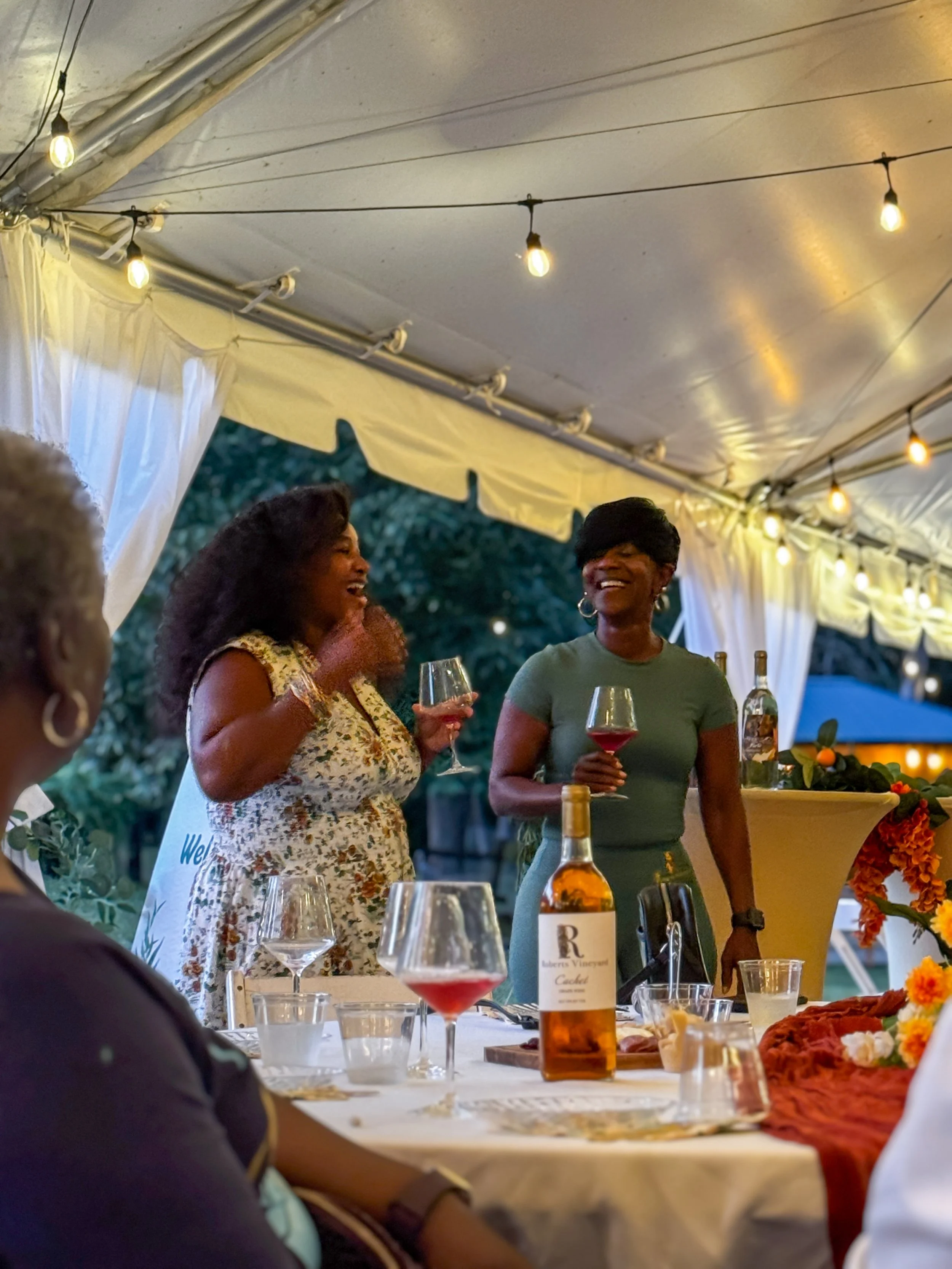The Years Inside A Bottle
The Years Inside A Bottle
Norwood Vineyard Archive
Friday, September 26, 2025
We’d been planning our September wine tasting for weeks - planning decor themes, selecting the wine choices and the perfect Trader Joe charcuterie pairings.
It was the continuation of a summer series we hosted at Norwood Vineyard on Black winemakers in the South, but this one felt heavier, holier somehow. Dr. Darlene Roberts, the owner of Roberts Vineyard and woman winemaker behind the bottles, was coming to the vineyard herself.
By the time guests began to arrive, we were still in that familiar sprint every host knows - trying to make beauty look effortless when it is in fact effort-full. And underneath it all, the quiet worry that never really leaves a host’s heart: Will they enjoy it? Will the person we’re honoring feel honored enough?
When Dr. Darlene began speaking, the vineyard stilled.
She told us her vineyard had been her husband’s solo dream at first, that she’d been more into fitness than farming and wanted nothing to do with the vineyard. After he passed, she decided to tend the vines and from curiosity began to learn the intricate craft of winemaking from scratch.
As she spoke and we poured the first glass, she told us how it had taken her two months to make the bottle in our hands.
But then she traced the math backward…four years of wine making practice, plus three years of planting and tilling before the vines even bore fruit, plus several years before that of purchasing the land, planning the layout of the vines and preparation.
And suddenly the wine tasted different.
You could feel the arithmetic of time in it.
This sweetness carried weight.
We’d worried, as hosts do, that some guests wouldn’t love the sweet Muscadine wine.
So we’d set out small bowls of fresh mint and rosemary, slices of lemon and lime, dried tart cherries, and sparkling club soda as an experiment in interpretation.
After tasting the wine in its original form. Guests then mixed in club soda, squeezed lemon and added other garnishes to transform the taste.
They laughed, compared notes.
Dr. Darlene didn’t flinch; she smiled, watching people meet her craft on their own terms.
When we began, I’d asked the room a simple question.
“How many of you love sweet wine?”
Only two hands lifted…slightly hesitant, almost apologetic.
I remember exhaling under y breath quietly and nervously thinking, Lord, here we go.
An hour later, those same hands that were not raised were now waving me down.
People who had sworn off sweet wine were asking for second pours, then third.
By the final tasting—her blueberry blend — was being unanimously proclaimed the house favorite with random guest shout outs of their 2nd and 3rd runners up.
Chairs had been shifting, phones were out, and guests were asking if she had more bottles in her truck.
She laughed, excused herself, and returned with a few last bottles in hand that went quicker than a blink.
Every bottle gone before the night ended.
But what stayed with me wasn’t the sell-out.
It was what happened inside me while she was talking about time.
She’d said it took two months to make a bottle,
then four years to master the craft,
then nearly seven before the vines had ever given her fruit.
And suddenly I could see it. The years beneath the bottle.
The unphotographed work: the planting, the pruning, the waiting, the loss, the starting over again, the acceptance, the learning, the picking, the squeezing, the testing, the tasting, the do over, the appreciation, the bottle.
That’s when my own definition of legacy shifted.
I had been calling these gatherings Legacy Tastings because of the stories we tell,
but that night I saw it so clearly and understood it deeply.
Legacy isn’t the story people hear after the thing is built.
It’s everything that happens before—
the imperfect sequence of decisions, the seasons of faith and doubt that make the current moment possible.
Watching that room drink what they once slightly resisted, I realized that’s the work we’re really honoring here.
Not just the craft, but the courage it takes to keep tending something long before anyone wants a taste.
So when I write these reflections, or set another table, that’s what I’m remembering:
that the sweetness people savor in the end is made from years that didn’t look sweet at all.
That’s real legacy—
the quiet transformation that happens, first when no one is looking and there’s nothing to see, and then, if we’re really paying attention, all around us.
—
Join us for the next Legacy Tasting
The beauty of A Story & A Bottle.
View Upcoming Events








